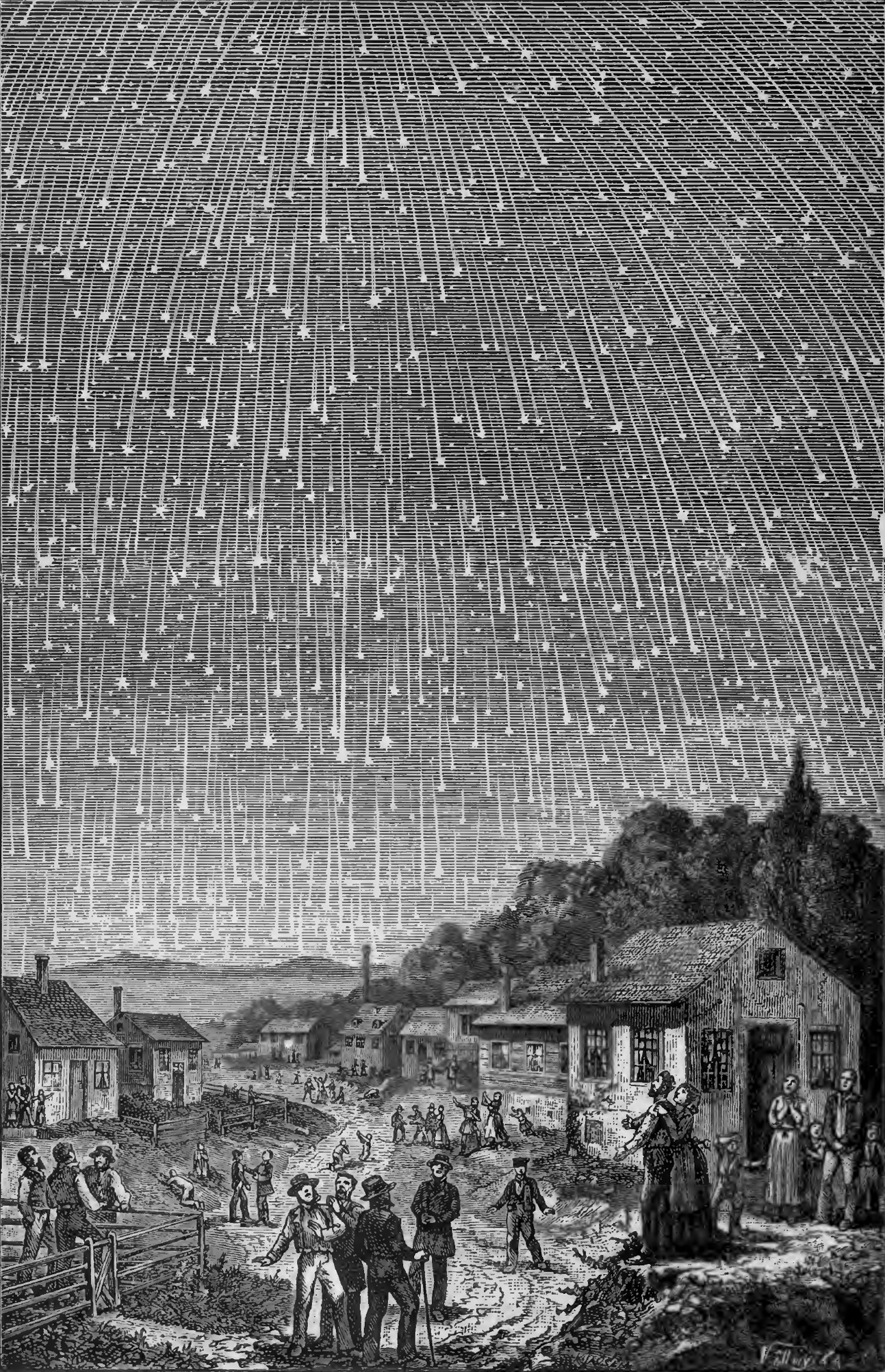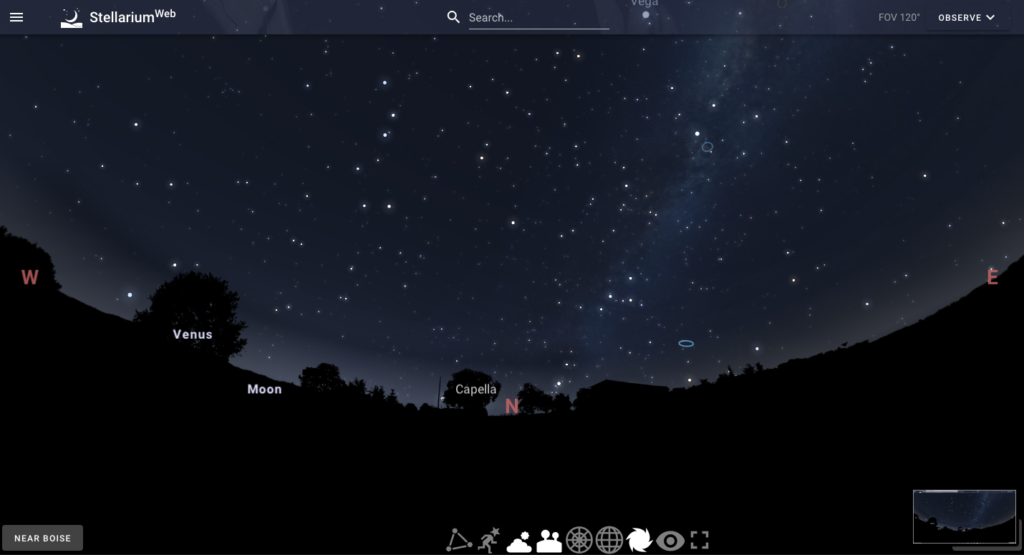
From space rocks to the unorthodox, the scientific community has often refused to accept anecdotal reports of strange and rare events. However, a recent government report on military sightings of UFOs may help to bring credibility to a phenomenon long dismissed. But just because a phenomenon is bizarre and unexplained, that doesn’t mean it’s aliens. That strange light in the sky is probably just Venus.
Ernst Chladni Explained a Space Oddity

On 12 November 1791, a spindle-shaped fireball streaked through the evening sky over Göttingen, Germany. The spectacle was witnessed by one of the most prominent scientists of the day, Georg Christoph Lichtenberg. He recorded the unusual and surprising event and then mentioned it a few years later to his friend lawyer and amateur scientist Ernst F. F. Chladni.
Of course, since time immemorial, there have been stories of strange lights and menacing fireballs screaming across the sky. Although interest in these reports had waxed and waned, over the centuries since the advent of modern science in the 1600s, they were largely dismissed by the scientific community as the ravings of unlettered peasants.
But Lichtenberg’s striking report captured Chladni’s imagination, driving him to the Göttingen library for almost a month to compile historical accounts of other celestial fireballs. To his lawyerly mind, the reports, spanning many countries and several centuries, so closely resembled one another that they couldn’t just be village folklore. They must represent a real phenomenon.
Chladni assembled all these reports in a 1794 book. With uncanny insight, he suggested the fireballs were rocks falling at high velocity from space and that the solar system might be filled with such rocks, leftover from its formation. This book laid the foundations of the modern science of meteoritics, nowadays central to astronomy, planetary science, and geology.
So how did the scientific community react to Chladni’s book? They panned it since it contradicted authorities from Newton to Aristotle. Almost ten years passed before Chladni’s suggestions were taken seriously. His work only began to find acceptance after a French-sponsored expedition in 1803 to L’Aigle in Normandy to investigate reports of rocks falling from the sky during an intense meteor shower.
UFOs to UAPs
I was reminded of this story by the recent publication of a report on military observations of unexplained aerial phenomena (UAP), what used to be called “UFOs”. The report, buried in a recent Friday afternoon data dump, garnered media headlines as it acknowledged 144 officially documented sightings of UAPs investigated by a Department of Defense Unidentified Aerial Phenomena Task Force (UAPTF).
Beyond acknowledging the existence of UAPs, the nine-page report basically just says the military doesn’t have sufficient data to explain almost any of the sightings (one is attributed to a deflating balloon). But, the report goes on, the sightings likely fall into one of five categories: airborne clutter, natural atmospheric phenomena, U.S. industry developmental programs, foreign adversary systems, and a catch-all “other” bin.
Though the report’s lack of a conclusion is frustrating, I actually found its mundane and matter-of-fact tone encouraging. UFOs have long been the stuff of Hollywood myth and talk radio legend, casting a pall of disreputability over what are probably, in many cases, important if ephemeral physical phenomena. Hopefully, a strait-laced, bullet-listed government report like this one may lend credibility to UFO studies, something like the L’Aigle expedition did for meteoritics.
Venus and Disk Clouds and Starlink Fly By
Such reporting has special relevance to Idaho because our state apparently had the highest number of UFO sightings per capita of any state in 2020. Why is a matter of speculation, but I suspect it’s a combination of unusually dark skies (Idaho has the only dark sky reserve in the US) and a rapidly growing population. The vast majority of UFO sightings have mundane and well-understood explanations.
For example, the object most commonly mistaken for a UFO is the planet Venus. Except for the Moon, Venus is our nearest celestial neighbor, which, combined with its highly reflective clouds, makes it the brightest object in the night sky. (On moonless nights, Venus can even cast shadows.) Recognizing Venus is reasonably easy: it is visible as a bright star near the Sun in the morning and evening.
Another commonly mistaken object is lenticular clouds. These clouds can look like disks and often appear in the atmospheric updrafts created as winds pass over mountains (a common occurrence in the rugged Idaho backcountry). So if you spot a layered, circular structure draping over a mountaintop, there’s a good chance it’s a lenticular cloud.
At twilight some near night, you might spot a mysterious chain of star-like points that streak across in the sky in a matter of seconds. This strange sight is thanks to Elon Musk’s company Space-X, which has begun launching thousands of small satellites into Earth orbit. Though these satellites may soon provide internet access to the far-flung corners of the globe, their frequent and bright trails across the night sky have become the bane of observational astronomers.
The Difference Between Science and Goofing Around is Writing it Down
So you saw something strange in the sky. What should you do next? Document the sighting as objectively as you can. The context of the observation is key to figuring out what it is. Note the date and time of day and the location from which you observed the object.
If you have your camera with you, take photos or a video. However, do NOT zoom way in on the object. The image resolution of most cameras is very limited (especially in the dark), and you won’t improve things by zooming. Worse, you’ll remove visual context (mountains, stars, etc.) important for identifying the object. Try to track the object slowly and steadily with your camera.
Whether you have a camera or not, note the direction in which you observed the object (east, west, north, south). Did it travel across the sky? In which direction and for how long? How did the brightness compare to the brightest stars (if in twilight)? Did its brightness vary? You probably won’t be able to accurately gauge the object’s distance, so don’t bother to guess its physical speed (in, for example, miles per hour).
With these data, you can then check whether any known celestial objects might match your observations. Free online tools, such as Stellarium, will let you punch in the time and location of your observation and show you which objects were visible in the sky.
Finally, if no other explanations suggest themselves, contact your local astronomy club for help. The Boise Astronomical Society is among the most active astronomy organizations in Idaho and full of ready and eager folks happy to talk astronomy with you. The astronomy program in Boise State’s Physics Department is also a good resource – twitter.com/astrobroncos.
We’re probably many years from explaining the US military’s unexplained aerial phenomena, but, as the governmental report advocates, steady, sober data collection and analysis will be key to resolving the mystery. Although it’s tempting to invoke extraterrestrials as an explanation, as Carl Sagan famously said, extraordinary claims require extraordinary evidence. And sometimes, as with Chladni’s meteoritical revolution, the explanation can still profoundly impact our view of the universe, even when it’s not aliens.
